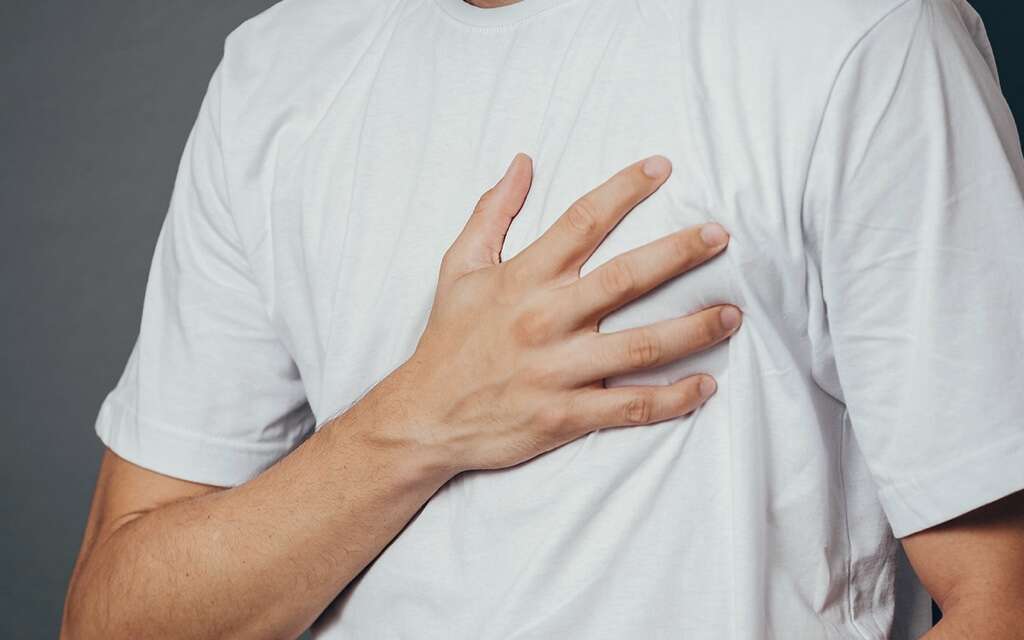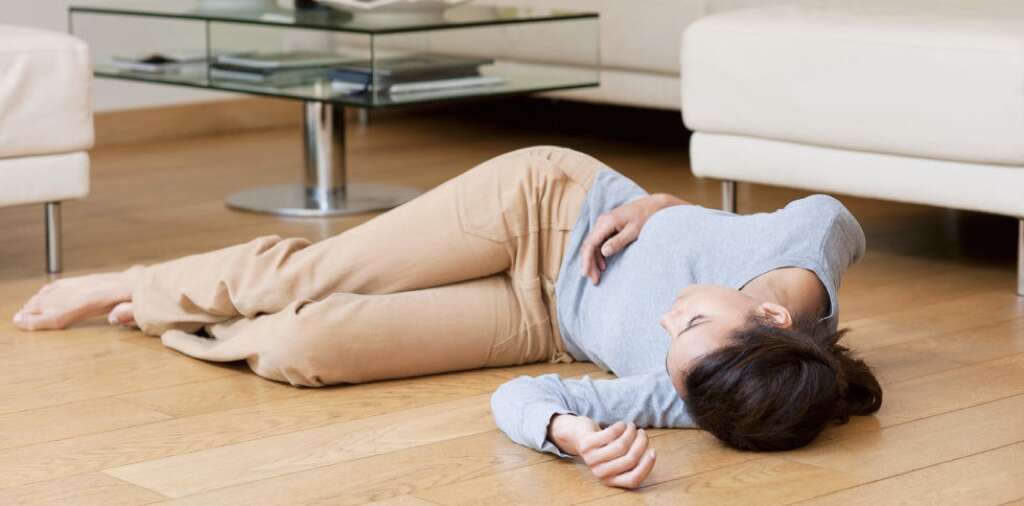10 Agoraphobia Symptoms
Agoraphobia is a condition where anxiety occurs in situations when the individual perceives their environment to be unsafe without a way to escape. These situations can include areas such as open spaces, shopping centers, public transit, or simply being outside the home. Being in these situations can cause the individual to have a panic attack. Those who are affected will go to great lengths to try to avoid situations that trigger their symptoms. In severe cases, these individuals are unable to leave their homes.
Experts believe that agoraphobia can be attributed to both environmental and genetic factors as the condition has been observed to run in families. It is also seen among individuals who have experienced a traumatic or stressful event such as an assault or the death of a loved one. Affected individuals have a higher risk of substance use disorder and depression. Without treatment, it is uncommon for the condition to resolve on its own. The treatment of agoraphobia usually involves cognitive behavioral therapy, which has shown resolution for about 50 percent of patients.
Agoraphobia has been estimated to affect about 1.7 percent of adults with women being twice as affected compared to men. This condition usually starts in early adulthood and is less common among older adults. It is rarely seen among children.

Symptom #1: Anxiety
Anxiety is an unpleasant emotion often accompanied by somatic complaints, rumination, and nervous behavior such as pacing back and forth. It is an uncomfortable feeling of dread over anticipated events, possibly causing a feeling of imminent death.
Anxiety must be differentiated from fear, which is a response to a real or perceived threat; anxiety is regarding a future threat. Anxiety is often accompanied by restlessness, fatigue, muscular tension, concentration issues, and more.

Symptom #2: Palpitations
Palpitations refer to the perceived abnormality of the awareness of cardiac muscle contractions felt in the chest. It can be felt as irregular, abnormally hard, or excessively fast. Palpitations can be seen in anxiety, structural abnormality of the heart, coronary heart disease, asthma, emphysema, and more.
Some of the associated symptoms of palpitations include shortness of breath, dizziness, headaches, sweating, chest pain, and more. It is also a symptom of anxiety and can be experienced among individuals with panic attacks with or without agoraphobia.

Symptom #3: Sweating
Sweating or perspiration refers to the production of fluids by the sweat glands of the skin. There are two types of sweat glands, known as the apocrine and eccrine sweat glands. Most of the body has eccrine sweat glands.
In humans, sweating occurs as part of thermoregulation where the evaporation of sweat from the surface of the skin has a cooling effect. In pathological sweating, it can be seen in myocardial infarction or any other condition where there is increased firing of the sympathetic nervous system. Sweating or perspiration is often accompanied by other symptoms such as breathlessness, palpitations, chest discomfort, and fever. In agoraphobia, sweating occurs as part of the sympathetic nervous system.

Symptom #4: Shaking or Tremors
Shaking or tremors refer to muscular contractions that can be rhythmic and involve oscillations. The movements can also be twitchy and can involve one or more body parts. Tremors can be caused by neurological conditions such as stroke, multiple sclerosis, traumatic brain injury, chronic kidney disease, use of drugs (caffeine, amphetamines, cocaine), alcohol, hypoglycemia, or as a symptom of anxiety.
In agoraphobia, tremors are often accompanied by sweating, palpitations, chest pain, and more.

Symptom #5: Shortness of Breath and Hyperventilation
Hyperventilation refers to a breathing pattern where more carbon dioxide is eliminated leading to hypocapnia. This causes the blood pH to increase, resulting in respiratory alkalosis, and can cause tingling in the lips, dizziness, headache, fainting, seizures, and more.
It is a symptom that can be seen in various disorders such as high altitude, physiological stress, head injury, anxiety, panic disorder with or without agoraphobia, asthma, pneumonia, and more. Shortness of breath or dyspnea are also associated symptoms when affected patients are unable to breathe.

Symptom #6: Abdominal Pain and Diarrhea
The abdomen can be divided into nine regions: right hypochondriac, epigastric, left hypogastric, left flank, umbilical region, right flank, right iliac, suprapubic, and left iliac. Diarrhea refers to three or more loose stools a day.
In agoraphobia, the activation of the sympathetic nervous system can result in abdominal pain and diarrhea. It is usually self-limiting and resolves on its own. Chronic cases can be managed symptomatically (short term) with loperamide.

Symptom #7: Chest Pain
Chest pain occurs when there is any pain felt in the region of the chest. It can be a symptom of serious conditions and is usually considered a medical emergency. Chest pain can be differentiated into cardiac and noncardiac-related chest pain. Some noncardiac-related chest pain includes lung issues, gastrointestinal issues, and musculoskeletal issues.
In agoraphobia, chest pain is a common symptom that is often felt in panic attacks. It has been estimated that as many as 78 percent of individuals describe that they experience chest pain when they have a panic attack.

Symptom #8: Syncope
Syncope or fainting refers to the loss of consciousness and muscle strength when there is a fast onset with spontaneous discovery. Syncope is caused by a decrease in blood flow to the brain due to low blood pressure. Some associated symptoms include sweating, pale skin, lightheadedness, loss of consciousness, nausea, vomiting, blurry vision, and more.
Causes of syncope include orthostatic hypotension, issues with the cardiovascular system, low blood pressure, dehydration, and even panic disorders. In agoraphobia, the patient tends to have a panic disorder causing hyperventilation, which reduces the amount of oxygen in the body contributing to syncope.

Symptom #9: Nausea and Vomiting
Nausea refers to an unpleasant sensation where there is an urge to vomit. While nausea may not cause any pain, the symptom can become debilitating when prolonged as it places discomfort on the upper abdomen, chest, and back of the throat. Nausea is nature’s way of discouraging the animal or human from repeating whatever has triggered the unpleasant feeling. Vomiting refers to the involuntary expulsion of stomach contents through the mouth and nose.
Both nausea and vomiting can occur due to disorders such as food poisoning, gastritis, tumors, and more. Both can be managed using antiemetics such as promethazine, ondansetron, and metoclopramide. In agoraphobia, the feeling of anxiety can be so intense that it results in nausea and vomiting.

Symptom #10: Paresthesia
Paresthesia refers to the abnormal sensation felt on the skin that can be described as tingling, burning, prickling, chilling, numbness, and more. Paresthesia can be either chronic or transient, with many possible underlying causes.
The commonest kind of paresthesia can be described as “pins and needles” or when a limb has been referred to as “fallen asleep.” In agoraphobia, paresthesia may have occurred due to hyperventilation or panic attacks that reduce the amount of oxygen in the body, leading to a general feeling of numbness or paresthesia.












